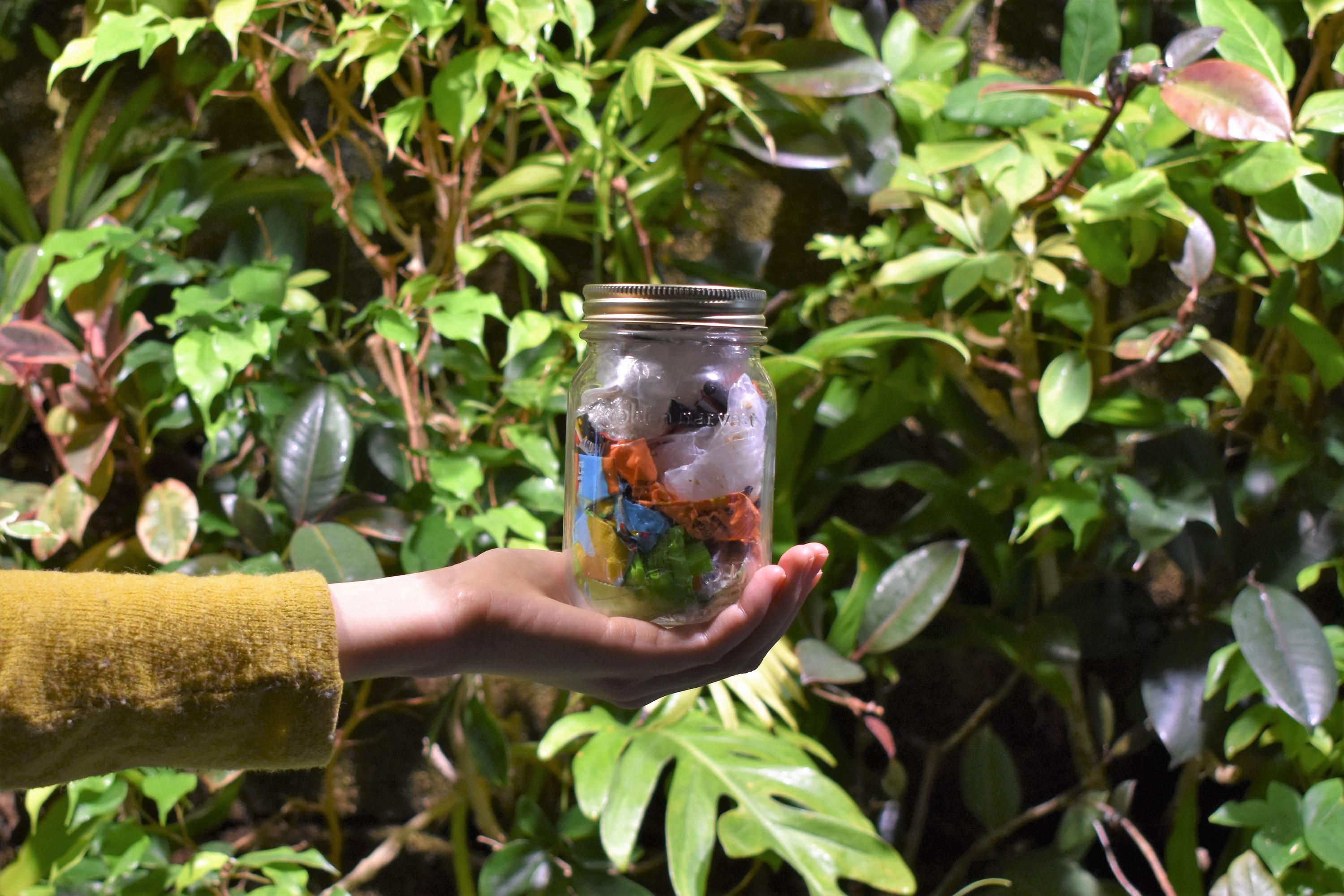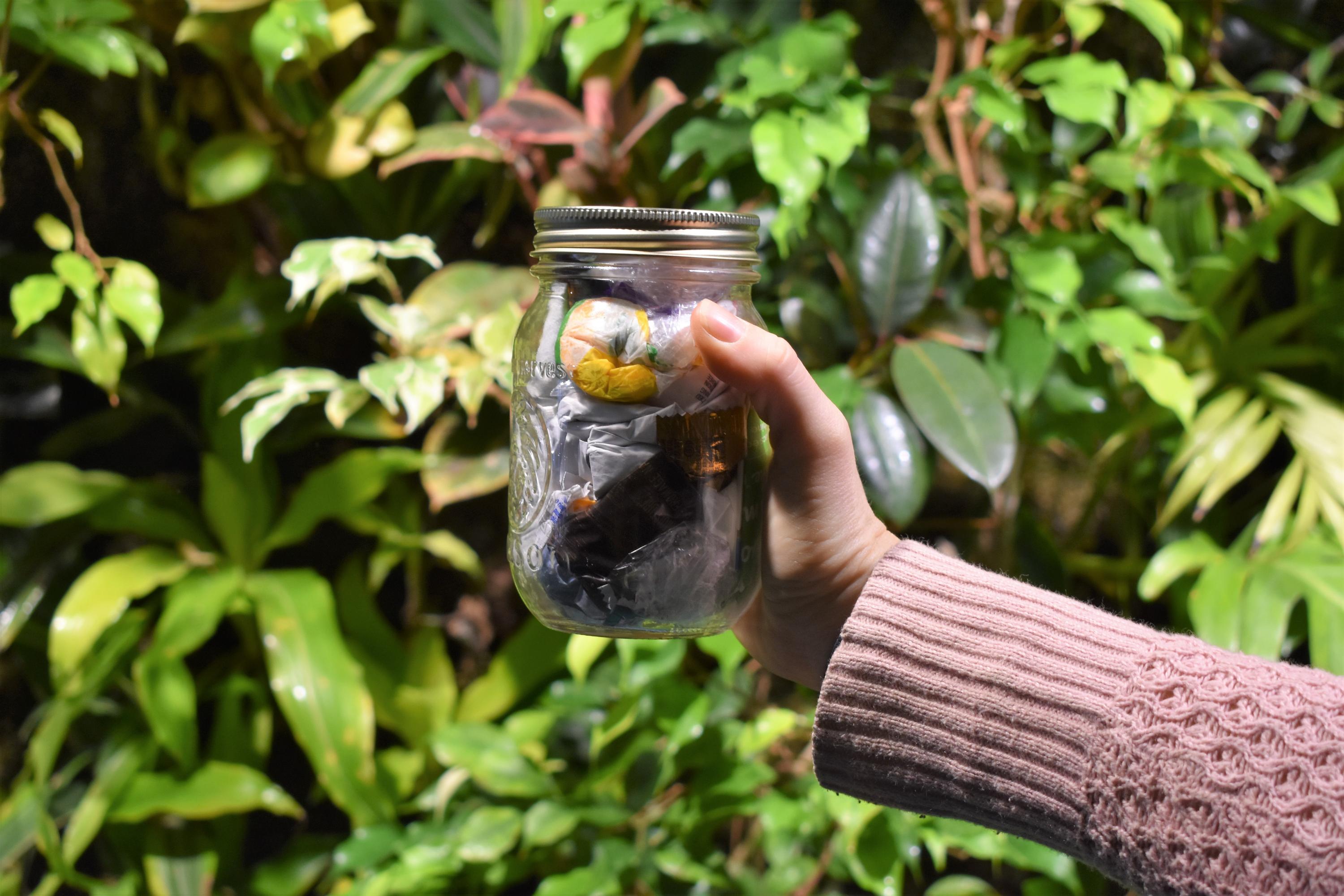Beth's reflections

This has been my first time doing the challenge and it has been a really eye-opening experience, I am so glad I did it! After reading back my first blog about preparing for the zero-waste challenge, I realize how important it was to plan out waste free alternatives to everyday products and I am glad I did. However, even though I was prepared many things I bought caught me out!
My first fail was throwing away a plastic razor in week three. I feel like this isn’t often talked about amongst ‘waste free’ products and it didn’t cross my mind in the planning stage. The razor also didn’t fit in my jar so just imagine that is a part of my waste for the month. I am going to see if I can purchase a more sustainable razor as I realize it’s an easy alternative.
I also found out that I was most mindful when I was out of the house because coffee shops and food places often leave you with a large garbage footprint after a visit. Friends and family also gave me snacks that I was reluctant to take because the wrappers had to go straight in my jar, but was I really going to say no to free food as a student? I also forgot to ask for no straw at a bar and was stuck with a plastic straw in my water at the start of my challenge. I learned my lesson and became even more mindful of the small things you can use over a week that go straight to the garbage such as wrapping on snacks, straws, gum, beauty products.
I was really happy to find out that bread bags are recyclable halfway through the challenge, which saved me a lot of space in my jar! I wouldn’t have found this out without talking to people about what I was doing, as I assumed it wasn’t recyclable. It goes to show that education is a key aspect of waste diversion! I also used the Waste Whiz to see if an item was compostable and recyclable before assuming it’s just garbage. It just takes a few extra seconds and, if you think of it, it has a huge impact. A bread bag would take anywhere from 10-1000 years to decompose in the landfill vs. being recycled and remanufactured into new products.
All in all, I loved using my new zero waste products that I purchased in preparation for the challenge. By the end of the month, I became a lot more mindful of my waste and it became second nature to think about my choices, use a compost and recycling bin more and talk about going waste-free. It’s even made me think of what presents I want to make or buy for Christmas this year and what waste they will create. I really want others to see how simple it can be if you are more mindful about your impact! The challenge is so simple and fun, you can challenge your office or friends and I really recommend you try the challenge too!
Andrea's reflections
How did I do?

The photo on the left represents (most of) my waste after 30 days of the mason jar challenge (along with two Styrofoam boards from meat/fish we had purchased before the challenge, not pictured).
Nearly all of the waste in my jar from the last 30 days is food related. In particular, I binged a few too many chocolate bars around Halloween so I have quite a few wrappers, we ate out a few times and had some garbage from that, and we used up some food in our cupboards (which I feel a little less bad about). There are items in here that definitely could have been avoided – many of those chocolate/candy wrappers, a Subway wrapper, a bag of chips (they are my weakness!), and a packet from mac and cheese.
Some caveats: As a reminder, I was not including any waste associated with my orthodontics and I did not include the bag of dog food we had to throw out. However, we’re going to explore TerraCycle as a potential way to recycle our bags of food! There was some other waste that I couldn’t fit in my jar, like bubble wrap that came from two new chairs we bought for our new house, and some other construction-related waste which we would not normally generate. These experiences encouraged me to take more time to think about packaging when placing online orders, and to be mindful of waste when buying future supplies for our renovations and home furnishings.
What did I learn?
Even though I didn’t contain all my waste in my 500 mL mason jar, I still consider the month-long challenge a success. Here are 3 of the key things I learned over the course of the challenge:
- Nearly all of the waste I generated over the 30 days was food related.
- It was really difficult to avoid waste if I didn’t plan my meals ahead of time.
- I felt happier and healthier when I planned my meals and knew that I was eating good food. I also felt happier when I knew I wasn’t generating any waste!
What’s next?
Doing the zero-waste challenge for 30 days was a really eye-opening experience. I've done a week-long challenge in the past, but in some ways that challenge couldn't capture products with a limited lifespan that was longer than a week.
I plan to empty out my mason jar and start fresh at work to see how long I go before my mason jar is filled! At home, we will try our best to frequent the Kitchener or St. Jacob’s Market for any meat we purchase so we can bring our own containers, but we’ll also try to incorporate plant-based meals at least 3 days per week. We’ll also visit Bulk Barn more often for our snacks and are very excited to shop at Zero Waste Bulk when it opens!
Similar to Beth, I'm very excited to think about how I can incorporate low and zero-waste gift options this Christmas. I think I'll be putting a lot more emphasis on 'experiences' rather than 'things'! And I'll also be making sure to let my family and friends know that about my new outlook on waste!